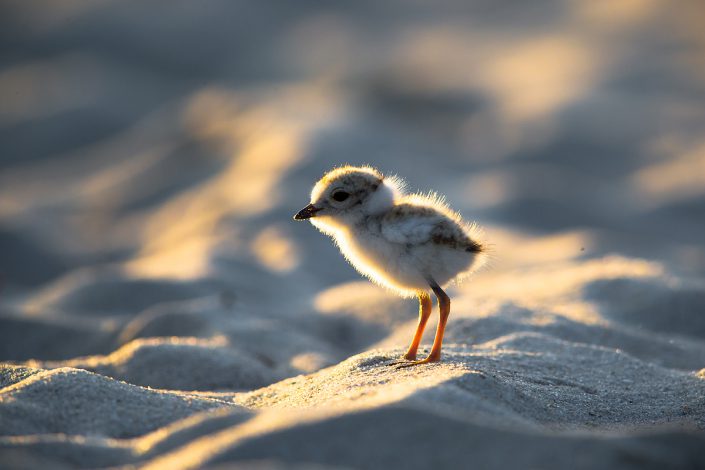2017: Piping Plover Nesting Season
How did they do?
Emily Heiser, CWFNJ Wildlife Biologist

For the 12th year in a row, the Conserve Wildlife Foundation of New Jersey, in partnership with New Jersey Division of Fish & Wildlife’s Endangered and Nongame Species, assisted in monitoring and managing the state’s Beach Nesting Bird Project. Four species are regularly monitored throughout the field season: piping plovers (federally threatened, state endangered), least terns (state endangered), black skimmers (state endangered), and American oystercatchers (state species of special concern). Statewide, piping plovers are of particular concern as their numbers continue to decline and federal recovery goals have not been achieved.
One hundred five pairs of piping plovers nested in New Jersey in 2017, a slight decrease compared to 2016 (115 pairs). Productivity (1.29 fledges per pair) remained well above the thirty-year statewide average (1.01 fledges per pair). This marks the fourth consecutive season yielding sustained, high productivity (1.36 in 2014, 1.29 in 2015, 1.35 in 2016, 1.29 in 2017). Although this is good news, productivity still falls below the federal recovery goal of 1.50 fledges per pair established in the USFWS Recovery Plan for Atlantic Coast Piping Plovers. Throughout the range, it is accepted that high levels of productivity generally correlate to an increase in pair number the following breeding season. We had hoped to see an increase in pair number here in New Jersey this year, but that was unfortunately not the case and little explanation as to why that happened exists.
Several sites performed well in 2017, but most notable was the success seen at Sea Bright in Northern Monmouth County. Ten pairs nested there this season, a four pair increase from six pairs in 2016. Each pair fledged at least one chick with two pairs fledging all four chicks – quite a feat! Overall productivity at Sea Bright measured 2.60 fledges per pair. Elsewhere throughout the state, moderate successes were achieved at Sandy Hook National Recreation Area, Island Beach State Park, Barnegat Light, Long Beach Township, Forsythe National Wildlife Refuge, and North Brigantine Natural Area. Cape May County continues an alarming decline to only four pairs. Of those pairs, one pair at Avalon Dunes fledged a single chick. Continued declines in the southern portion of the state and only moderate successes elsewhere leave much to be desired. It will take several more years of increased population and higher productivity to move towards recovery.
Discover more from Conserve Wildlife Foundation of NJ
Subscribe to get the latest posts sent to your email.
Leave a Comment
Interesting results, Emily. Go PIPL! RH
Comments are closed.